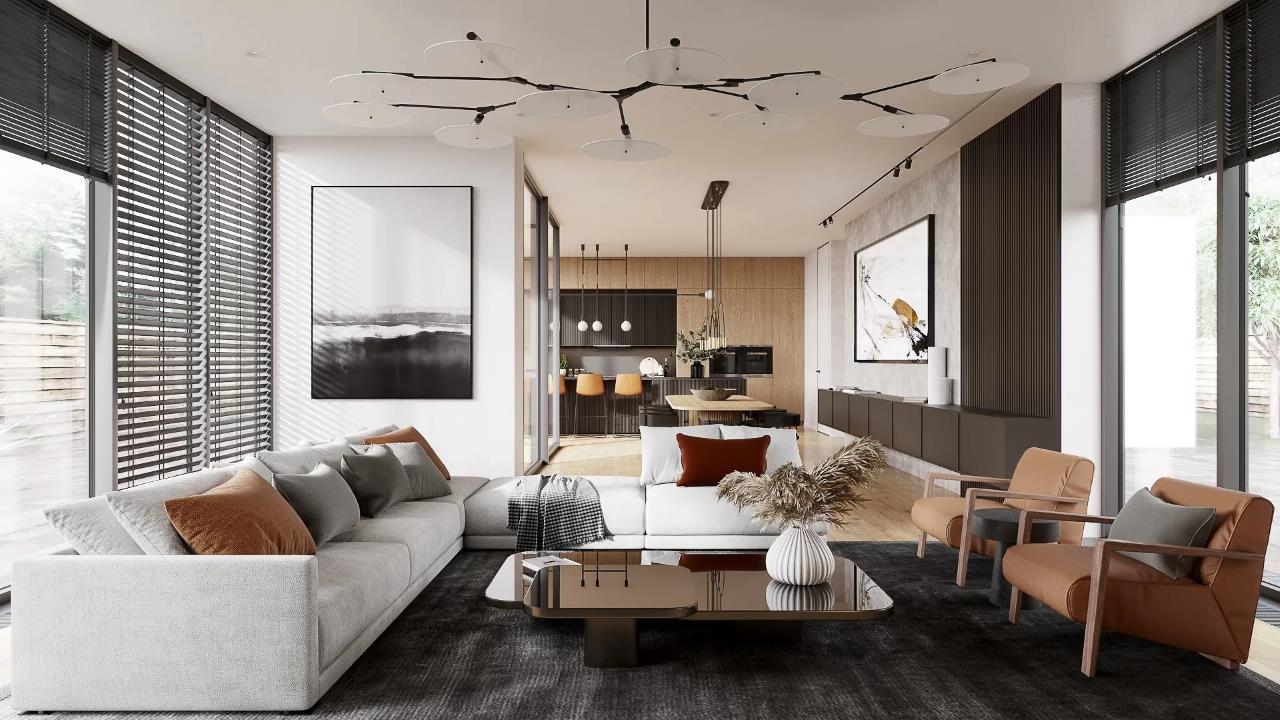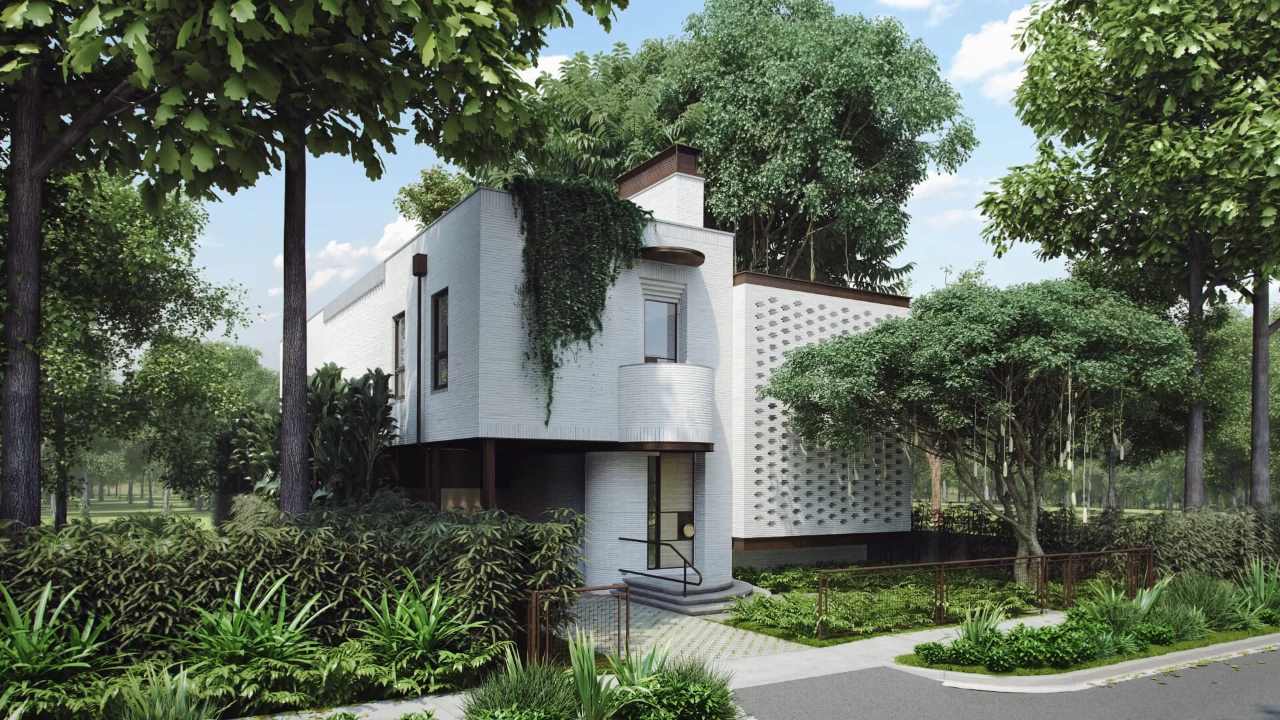If you work in the visualization industry, especially in interior design, real estate, or architecture, you may know the terms 3D modeling vs 3D rendering. However, it can lead to confusion when using these terms if you misunderstand their meaning. Therefore, it is important to understand their definitions also similarities and differences. From that, your 3D design process becomes more effective.
In this blog, Chip Render will clarify the meaning of 3D modeling vs 3D rendering along with analyzing their similarities and differences. Finally, we will recommend when you should use 3D modeling or 3D rendering for your career.
3D Modeling vs 3D Rendering: A Brief Introduction
1. What is 3D Modeling?
3D modeling is conducted before 3D rendering. It is the process of creating virtual three-dimensional images using specialized software and mathematical equations. Artists use these 3D models for many purposes such as animation, rendering, and more.
A 3D model consists of points (or vertices) connected together to form edges and faces in 3D space. Then, they are refined and added details to create a complex object called a 3D image. Specialized software used to create 3D models such as Rhino, 3ds Max, Blender, SketchUp, etc. They provide many tools to manipulate the shape, size, and position of objects as well as add textures, colors, and other elements to make the model more vivid.
Moreover, 3D modeling is popular in interior design, architecture, product design, video game development, film and animation. Especially in architecture, they help display objects, landscapes, and physical dimensions, also their interactions in floor plans. This makes it easier to see how objects fit together and edit if needed, helping you plan projects more effectively. Additionally, 3D models also facilitate more engaging interactions with customers. It provides clear and detailed images of every corner of the future space they will use, thereby giving you feedback on what they like and dislike. This way, you can make changes and minimize additional costs before construction.
2. What is 3D Rendering?
3D rendering is the process of creating two-dimensional images from 3D models using specialized computer software. It involves creating a realistic image of a virtual scene by simulating how light interacts with objects in the environment.
To create a 3D render, you need to design a 3D model of all the desired objects in the render. After that, you can use special rendering software like V-Ray, Lumion, Enscape, etc… to add lighting, shadows, textures, or other visual effects to create the image. Besides, you can also add complex algorithms and techniques that simulate how light interacts with objects like in the real world to make the images more realistic.
3D rendering is commonly used in architecture, interior design, engineering, video game development, and several other fields. Thanks to 3D rendering, designers can simulate realistic designs as well as comprehensive visualizations of the final product. From there, it helps promote marketing, supports presentations to customers, prospects, and investors, and supports design editing before implementation.

3D modeling vs 3D rendering image via foyr.com
3D Modeling vs 3D Rendering: Similarities
1. 3D Object Representation
Both 3D modeling and 3D rendering deal with the creation and manipulation of three-dimensional objects and scenes.
2. Require Specialized Software
Both processes rely heavily on computer software and digital tools.
For 3D modeling, many software such as Revit, SketchUp, Rhino, and 3ds Max, allow users to create 3D objects and adjust shape, size, texture, and other visual elements. Similarly, for 3D rendering, there are many different types of software such as Blender Cycles, Octane, Arnold, etc that allow users to use 3D models to create realistic 2D images or animations. Artists use them to add lighting, shadows, textures, and other visual effects to 3D models and create 3D renderings.
3. Enhance Visualization
Both 3D modeling and rendering are important for enhancing visualization and supporting effective communication of concepts, designs, and virtual environments.
4. Require Technical Expertise
3D rendering and 3D modeling require technical expertise because they involve complex software tools and techniques for creating and editing digital 3D objects and environments.
To create 3D models, an artist or designer must have a deep understanding of 3D geometry and texture. They should be familiar with the software’s complex features and workflows. Additionally, they must have a keen eye for design to create attractive images. Meanwhile, 3D rendering requires expertise in lighting, shading, and texturing. A 3D artist must understand the principles of light and shadow, as well as experience with 3D rendering software.
5. Importance of Creative Workflows
They are integral parts of the creative workflow, often used in combination to turn ideas and designs into reality.

Interior architecture image via archicgi.com
3D Modeling vs 3D Rendering: Differences
1. Order in Workflow
The main difference between 3D modeling vs 3D rendering is their order in the design process. Specifically, the 3D modeling process takes place before 3D rendering because to create a rendering, you must first have model objects.
First, 3D modelers create a 3d model of the project from a CAD or PDF file. These models are then passed on to 3D artists to do the rendering phase.
2. Output Difference
Another difference between 3D modeling and 3D rendering is the final output of the process. The 3D modeling process creates 3D models, which consist of surfaces, and solid structures but lack realistic lighting and textures. While 3D rendering produces high-quality architectural renderings, images with realistic lighting, shadows, reflections, and textures, give a lifelike appearance to 3D models.
You can export 3D models in many formats to use with rendering software, 3D printing, or creating animations. In contrast, 3D rendering creates 2D images that can be used for design development, marketing, advertising, and presentations.
3. Technical requirements
3D modeling and 3D rendering both require different techniques. They may overlap in some areas, but here are the specific skill requirements:
-
Skills needed for 3D modeling:
- Ability to work with references: 3D modeling often involves working with reference materials such as photos, sketches, or blueprints to create accurate models.
- Software proficiency: To create good 3D models you need to be proficient in using 3D modeling software such as Blender, Autodesk Maya, 3ds Max, Cinema 4D, or ZBrush to create and manipulate 3D objects. Additionally, getting familiar with sculpting software like Mudbox or Sculptris for organic modeling and character design also helps.
- Technology skills: A 3D modeling artist needs to understand geometric and spatial relationships to create accurate 3D models. Furthermore, proficiency in UV mapping and texturing is required to add surface details and textures to 3D models.
- Detail attention: High attention to detail ensures accuracy in 3D modeling because even a small mistake in the model can affect the final results.
-
Skills needed for 3D rendering:
- Aesthetic awareness: 3D rendering needs a strong aesthetic sense to create visually appealing renderings. Moreover, an understanding of composition, color theory, and visual storytelling is also required.
- Understanding Lighting and Materials: 3D rendering involves simulating lighting and materials for a 3D model to create photorealistic images. Therefore, a 3D renderer needs to understand how light interacts with different materials.
- Knowledge of Rendering Software/Plugins: It is possible that 3D modeling and 3D rendering use the same software but the skill sets are different. Furthermore, 3D rendering also requires plugins such as V-ray and Corona.
- Time management: Rendering is time-consuming so you need to manage your time well. Therefore, optimizing render times by adjusting settings or using render farms is very important, especially when you are on a tight deadline.

Exterior architecture image via archicgi.com
Reuse a 3D model with different 3D renderings
3D rendering is performed on a 3D model, so reusing the 3D model with different 3D renderings is a common practice. There are many ways to use 3D models in creating various renderings. For example, if you create a sofa model, you can add it to the object library to use in future designs. If you have a 3D house model, you can create different house renderings from different perspectives such as front, back, etc. The same goes for interior furniture.
Additionally, you can simplify and optimize the 3D modeling and 3D rendering process using references such as sketches, photos, or blueprints. In addition, you should build existing 3D content such as models, textures, and materials instead of creating everything from scratch. Furthermore, optimizing software settings also helps increase performance. Besides, if your computer system does not meet the software’s system requirements, using a render farm is an ideal choice.
3D Modeling vs 3D Rendering: Which one should you choose?
Both 3D modeling and 3D rendering are exciting and require different skills. But to choose one of them to become your career path, it depends on your interests, abilities, and knowledge.
3D modeling is suitable if you enjoy working on the technical and creative aspects of 3D modeling. Also, you have a passion for visual arts, design, and creating three-dimensional images of objects, environments, characters, or concepts. Furthermore, 3D modeling will be a reasonable career direction if you love design architecture, or game development because they will require designing complex 3D models.
On the other hand, pursuing a career in 3D rendering can be an ideal choice if you have a passion for visual arts, technology, and creating lifelike visualizations. If you have artistic talent and like working with light, texture, and materials, 3D rendering will be more suitable.
Final thoughts
In conclusion, both 3D modeling vs 3D rendering play an important role in creating engaging and visually appealing digital content in various industries. 3D modeling is creating a three-dimensional image process, while 3D rendering turns the model into a realistic image. These two processes have distinct similarities and differences, so if you are planning to pursue one direction, carefully consider your passion and abilities.

If you want to learn about 3D modeling and 3D rendering but your computer is barely compatible with the software, then come to Chip Render. We provide 1/2/4/6x RTX 3090 servers and you will have full access to it like a personal computer. Accelerate your modeling and rendering process at affordable prices, only from $2.9/hour.




